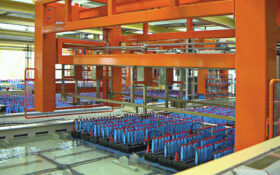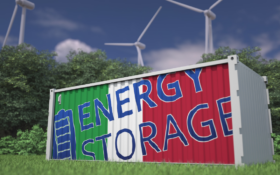The Stanwell Power Station in Rockhampton in Queensland, Australia, is a hub for energy innovation. Stanwell and Energy Storage Industries Asia Pacific (ESI) have signed a Memorandum of Understanding concerning a new iron-flow battery pilot project – claimed to be the world’s largest.
Twenty batteries, each 12 metres long, will form a 1 MW storage system with a capacity of 10 MWh. The companies said this is the first pilot project in Australia and the world’s largest iron-flow battery of its kind. Stanwell was a coal-fired power plant.
The government of Queensland has set the goal that Stanwell will be operating as a clean energy unit in 2032–33. Stanwell is the size of a shopping centre. The energy palette of the future will contain wind and solar power, hydrogen and battery storage, and other modern and sustainable energy technology.
The battery storage is intended to test the viability of iron flow batteries for medium-duration energy storage of between eight and 12 hours. The solution will support the grid during periods of high demand of power and low supply of renewable energy. ESI has already delivered 10 batteries to Stanwell.
“Queensland is at the forefront of battery technology development and this transaction reinforces the state’s reputation as a leader in the renewable energy economy, while also training the workforce of the future,” Stuart Parry, Managing Director of ESI said.
ESI has already invested A$70 million ($45 million) in a facility in Maryborough for production of iron flow batteries. The company will also manufacture the electrolyte in nearby Townsville, making Queensland a hub for this technology.
The government of Queensland has supported development of flow batteries with A$24 million ($15 million) to increase local employment and to replace imported lithium-ion batteries with a domestic product.
Iron flow batteries are based on the common raw materials iron, salt and water. The cycling capacity exceeds 20,000 cycles and the expected lifetime is more than 25 years.












